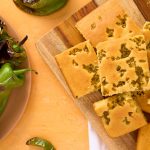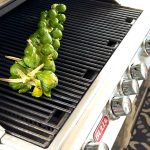 This Saturday, September 9th, Bull Outdoor Products will be hosting their annual Grill For Good 2017 Fundraising Gala at the Woodbridge Country Club. Mark Nureddine, owner of Bull, and his caring wife Barbara have united with the amazing non profit organization (FAR) For A Reason to establish the Grill for Good campaign. “The Grill for Good campaign brings businesses and the Lodi community together to support the FAR scholarship program and school development in the most impoverished regions of rural Haiti.” Please show your support and join us for an evening of fun and traditional Haitian cuisine! Click on this link for more information and to purchase your tickets.
This Saturday, September 9th, Bull Outdoor Products will be hosting their annual Grill For Good 2017 Fundraising Gala at the Woodbridge Country Club. Mark Nureddine, owner of Bull, and his caring wife Barbara have united with the amazing non profit organization (FAR) For A Reason to establish the Grill for Good campaign. “The Grill for Good campaign brings businesses and the Lodi community together to support the FAR scholarship program and school development in the most impoverished regions of rural Haiti.” Please show your support and join us for an evening of fun and traditional Haitian cuisine! Click on this link for more information and to purchase your tickets.
The more I read and learn about Haitian history and food, the more I am truly intrigued. Culinarily speaking, Haitian food has numerous cultural influences that infuse to create this one of a kind cuisine, and it already has me salivating for more! In many traditional Haitian recipes, you will notice a base seasoning mixture called epis, which is similar to a marinade. Epis is used as a staple, prepared and kept on hand in the fridge at all times! The marinade varies depending on what region you are in, but the key is creating a well-balance of spices, acids and oil.
Typically, epis is a flavorful combination of scallions, bell peppers, onions, garlic, and parsley, along with other spices that are traditionally blended together using a mortar and pestle. However, a food processor is the now “go to” appliance of convenience. This flavorful base/marinade is used to season soups, rice, meats and fish. I read that even if the recipes do not call for epis specifically, it is often used anyway! The recipe below is one way to make the epis marinade. Use it as a guide and feel free to change it to your liking with additional spices and fresh herbs.
There is one Haitian dish, a staple side dish, that frequents the tables in Haiti. To Haitians, it’s know as diri ak pwa, and to others, it’s simply known as rice and beans! While it may sound simple to make, keeping tradition and Haitian techniques in mind when making this dish is crucial. Another coastal dish that got my taste buds excited was freshly grilled lobster and conch, mainly served along the southern coast in Jacmel and Port Salut. To give the lobster additional flavor, I will brush the epis marinade on the lobster meat and finish on the grill.
On the menu this week – Haitian Grilled Lobster with Rice and Beans. Haitians typically serve grilled lobster with large portions of sliced avocado and pikliz, what we know as picklese, a spicy condiment made from cabbage, vegetables and habanero chilis that is pickled and served in a vinegar base.
I have watched hours of homemade videos online to assure that I create a recipe that is true to Haitian tradition. It feels as though I was sitting table side, pen and paper in hand, rubbing elbows with these amazing women as I jotted down as many tips and techniques as I could while they cooked their beans and rice recipes (which they learned from the grandmother’s mother!)
- 1 onion
- 6 shallots
- 1 green bell pepper
- 1 red bell pepper
- 6 scallions
- ½ bunch Italian parsley, leaves only
- 6 cloves garlic
- ½ cup evoo
- 2 chicken bouillon cubes
- 1 scotch bonnet pepper (optional if you do not like too spicy)
- 1 lime, juice or ¼ cup white vinegar (optional)
- Clean and roughly dice all the ingredients. Place into a food processor and blend until a smooth consistency.
- Keep in a sealed container in the fridge.
- 4 (12 ounce) lobster tails, cut from the top of shell from meaty portion to the tail
- 2 tablespoons epis marinade
- 3 tablespoons olive oil, for grilling
- Kosher salt and freshly ground pepper, to taste
- Preheat the Bull BBQ on medium heat. Remove any residue and wipe the grill grates with a well oiled rag to prevent any sticking.
- Place the lobster tails, once cut, on a half sheet pan and brush the epis marinade onto the lobster meat.
- Place the lobster tails, tail side down, and allow them to cook for 5 minutes till grill marks form.
- Turn them over and let them cook for an additional12-15 minutes with the lid closed, until the meat is opaque and done. Keep an eye on the lobster tails that they do not catch of fire.
- To serve, place a lobster tail on a plate along with the rice and beans, pickled cabbage and sliced avocado.
- 2½ cups long grain rice, washed 3 times with cold water, uncooked
- 1 cup dry beans, pinto, red or kidney
- 3½ cups reserved liquid from cooked beans
- 2 tablespoon Haitian marinade (Epis)
- ½ cup olive oil
- 1 scotch bonnet pepper, whole (optional)
- 1 cube chicken bouillon cube (aka Maggi)
- 1 tsp salt
- 1 tsp ground black pepper
- 2 sprigs fresh thyme (optional)
- 2 sprigs fresh parsley (optional)
- 1 bay leaf
- Soak the beans for at least four hours. This reduces cooking time almost in half.
- Cook the beans in 6 cups water with a dash of oil and a pinch of salt.
- Bring to a boil, reduce heat and simmer. Cook the beans for about 45 minutes, or until tender.
- Drain the beans, RESERVING THE LIQUID.
- In a dutch oven pot over medium heat, add the oil. Add the epis and saute/fry for 5 minutes (try to avoid the garlic from burning).
- Next, add the cooked beans, and gently stir/saute avoiding the beans from breaking down. Using your fingers, break the bouillon cube down into the beans, saute for about 6 more minutes. Smells good!
- Add the salt, pepper and allow the beans to saute/fry some more.
- Next add the 3 cups reserved liquid. Also add ¼ cup water and bring the liquid to a boil. Taste the liquid to make sure it is salted enough. Adjust if needed.
- Pile the washed rice on top of the liquid, forming a mound of top of the water (see chef’s note).
- Carefully mix the rice into the liquid and beans and bring to a boil.
- Reduce the heat to medium-low and wait to cover with the lid until most of the liquid has almost cooked off/evaporated.
- Add scotch bonnet, thyme, parsley and bay leaf. Cover with the lid and cook for 25 minutes without removing the lid, very important!
- Remove the lid, discard the scotch bonnet, gently stir and enjoy!
Chef’s Note:
- Once you cut the lobster tails open, flip the tail over and insert a skewer starting from the tail and through the center of the meat and back out the other end. This will prevent the tail from curling up while on the grill.
- When it comes time to add the rice to the beans/liquid, I was taught that it is important to add the rice a spoonful at a time, forming a pile in the center of the pot. The pile should sit halfway in the liquid and on top a “pile” of rice will form. If all the rice fell into the liquid mix, this indicates there is not enough rice to liquid ratio. More rice would need to be added until this pile has formed.
- Before serving, gently stir the finished rice and beans, making sure all of the spices and bouillon cube are mixed throughout and not sitting on the bottom of the pot.
♥ Chef Amy






Prayers for Haiti and all of Caribbean Islands with the approach of Irma. Wonderful recipe in tribute to Haitian cuisine and the FAR event this weekend. Much need supporting Aid for Haiti.